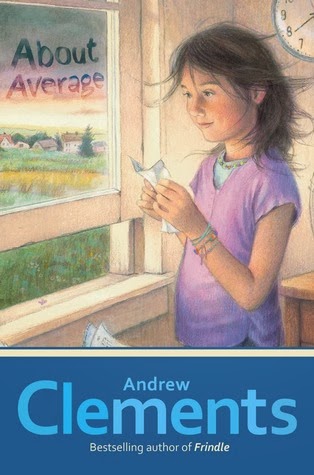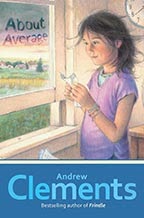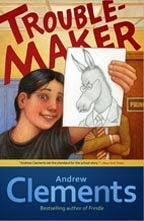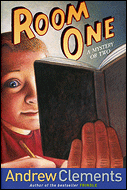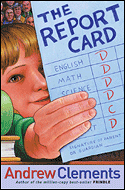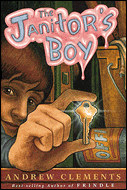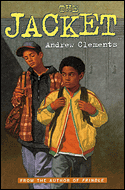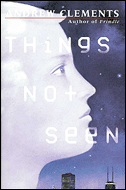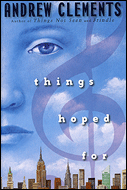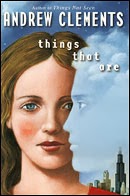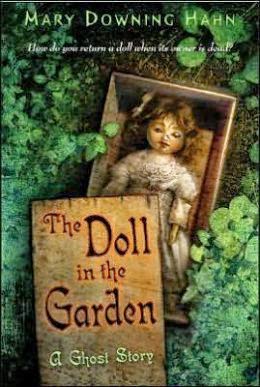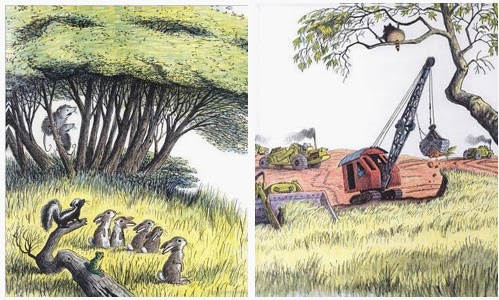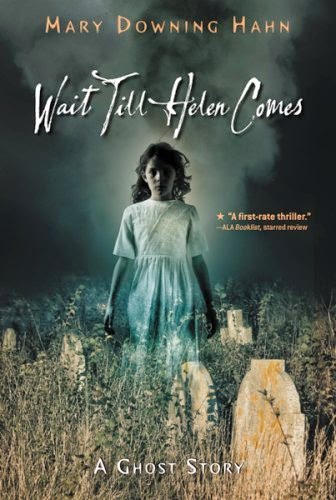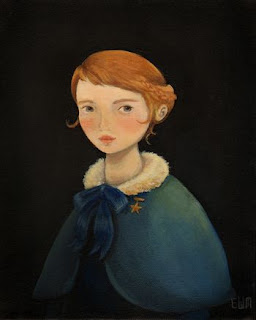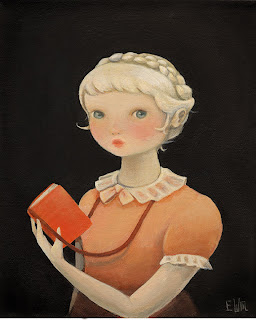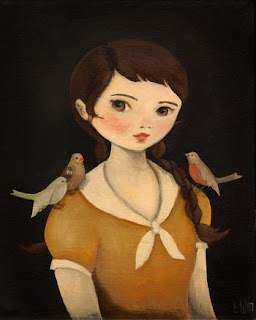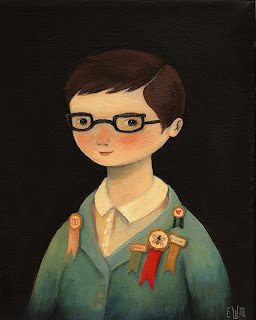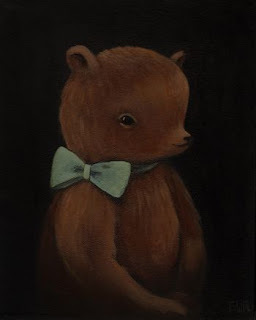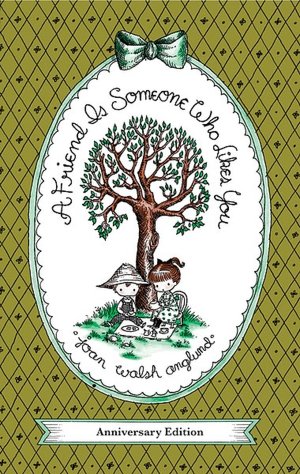ABOUT AVERAGE is now in paperback!
Andrew Clements is a prolific author of the bestselling (as in, 2.5 million) story about a boy who makes up a new word, Frindle. Published in 1996, Frindle is often part of the fourth and/or fifth grade curriculum at many elementary schools. In fact, Clements, who began his career as a teacher, sets almost all of his books (excluding the "Things" trilogy, which are for slightly older readers) squarely in school. Even his new mystery-adventure series Keepers of the School series, while a change in genre, is set in a school. And, coincidentally, the only other Clements book I have read is his novel titled The School Story, which is about a girl who writes a school story titled, "The Cheater." I loved The School Story and have no idea why it has taken me this long to read more of Clements's books because he truly is a phenomenal writer, gifted at thinking like a kid and expressing those thoughts on the page, while also crafting layered, intriguing stories from premises that can sometimes seem simple and straightforward but are ultimately deeply rewarding.
I was drawn to Clements's newest book, About Average, because of this seemingly simple premise, as described in the blurb:
Jordan Johnston is average. Not short, not tall. Not plump, not slim. Not blond, not brunette. Not gifted, not flunking out. Even her shoe size is average. She’s ordinary for her school, for her town, for even the whole wide world, it seems.
But everyone else? They’re remarkable. She sees evidence everywhere—on TV, in magazines, and even in her classroom. Tremendously talented. Stunningly beautiful. Wildly gifted. And some of them are practically her age!
After reading so many books about seemingly average kids who find out they are wizards or descendants of Greek gods and seemingly average kids who get invited to detect their way out of a multi-million dollar, state-of-the-art public library or find a hidden movie about a lake monster, I was really, really ready for a book about a real, truly average kid living a real, truly average life. And that's what I got - initially. While I remain just the tiniest bit disappointed that, in her averageness, Jordan turns out to be above average, Clements has woven such a wonderful, compelling story that takes place over the course of one school day that comes at the tail end of the school year, that there is no way that I cannot love About Average. But, I am still on the look out for a book about a truly average, from start to finish, ordinary kid...
Clements draws you into About Average and a day in the life of Jordan Johnston, sixth grader at Baird Elementary School in Salton, Illinois, immediately. Her day begins with Pomp and Circumstance, band practice for the upcoming sixth grade graduation. Jordan is very good at putting her violin way carefully and "polishing the rich brown wood and keeping the strings in tune, and keeping the bow in tip-top condition. It was playing the thing that gave her trouble." But, she refused to give up on it. She has given up on so many other things over the course of the school year. Her chances of winning a trophy or getting written up in the newspapers or being amazing like the kids she saw on television were dwindling. As Jordan's day unfolds, little by little, Clements reveals that this seemingly ordinary kid has a lot going on inside. Jordan is being bullied, but it's a subtle kind of mean. She's not being hit, she doesn't feel "threatened or in like she was in danger . . . mostly she felt stuck. And trapped. And puzzled." Who the mean girl is and why she is bullying Jordan is almost as compelling as how she is making her feel bad. A few months back, Jordan spent class time making three lists: Things I'm Great At; Things I'm Okay At; Things I Stink At. Her first list, Things I'm Great At, has only two items: babysitting and gardening. The "Okay" and "Stink" lists are pretty long, though. Somehow, Marlea Harkins has gotten her hands on these lists and is using them to tease and humiliate Jordan.
But, besides being good at gardening and babysitting, Jordan is good and being good natured and she tries her best to turn the situation with Marlea around. She spends quite a bit of her time thinking about how to respond to Marlea's taunts and how to turn the other cheek and be genuinely nice to her, when she realizes how much space she is taking up in her thoughts. Over the course of the day we get inside Jordan's head as she thinks about Jonathan Cardley, the cute boy who sits next to her in math, talks to her best friend Nikki about her lists, and writes haiku in English class. Intermittently, we get a third person narrative featuring Joe Streeter, the local weather guy and meteorologist as he becomes increasingly concerned about the intensifying weather conditions that can make summer on the plains hot, sticky and occasionally dangerous. Clements deftly and satisfyingly (although just a bit harrowingly from the perspective of a parent) brings together the two story lines for a dramatic ending to About Average. Even better, Clements manages to take Jordan's average qualities and talents, as well as one from the Things I'm Great At list, and show that she is anything but average!
Source: Purchased Audio Book
Andrew Clements's books - most of which have brilliant cover art by the amazing Brian Selznick.
Benjamin Pratt and the Keepers of the School Series
The "Things" Books
